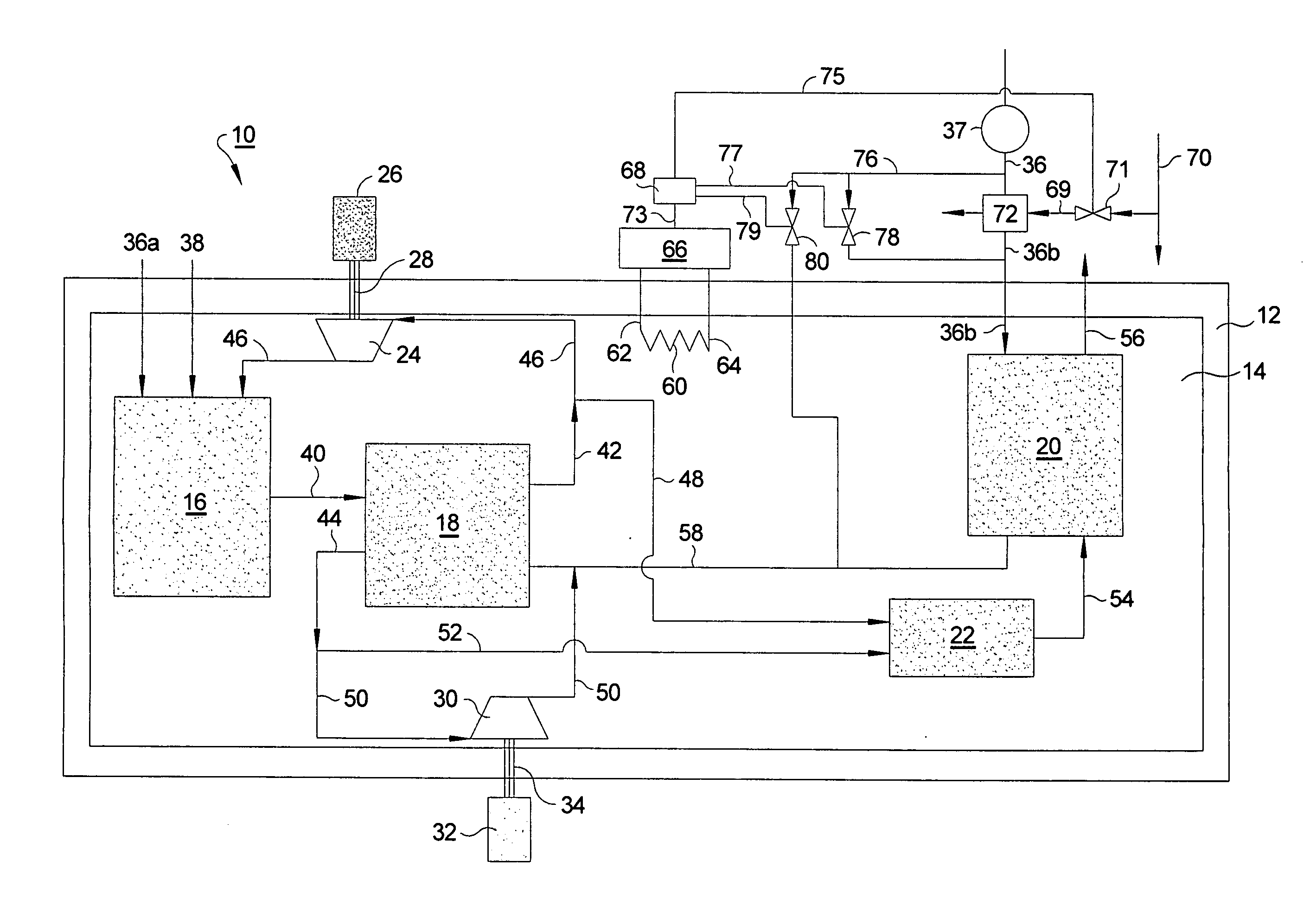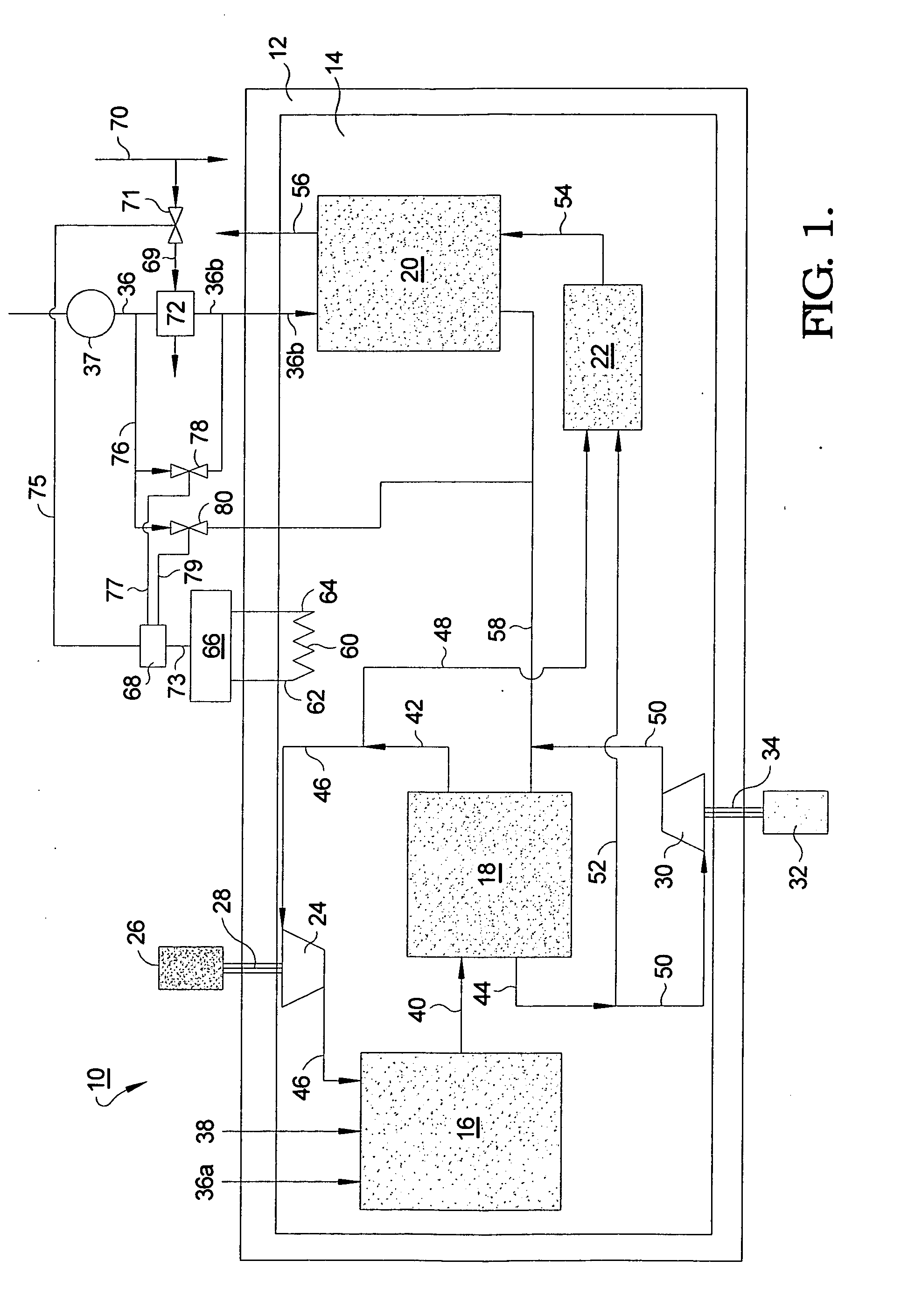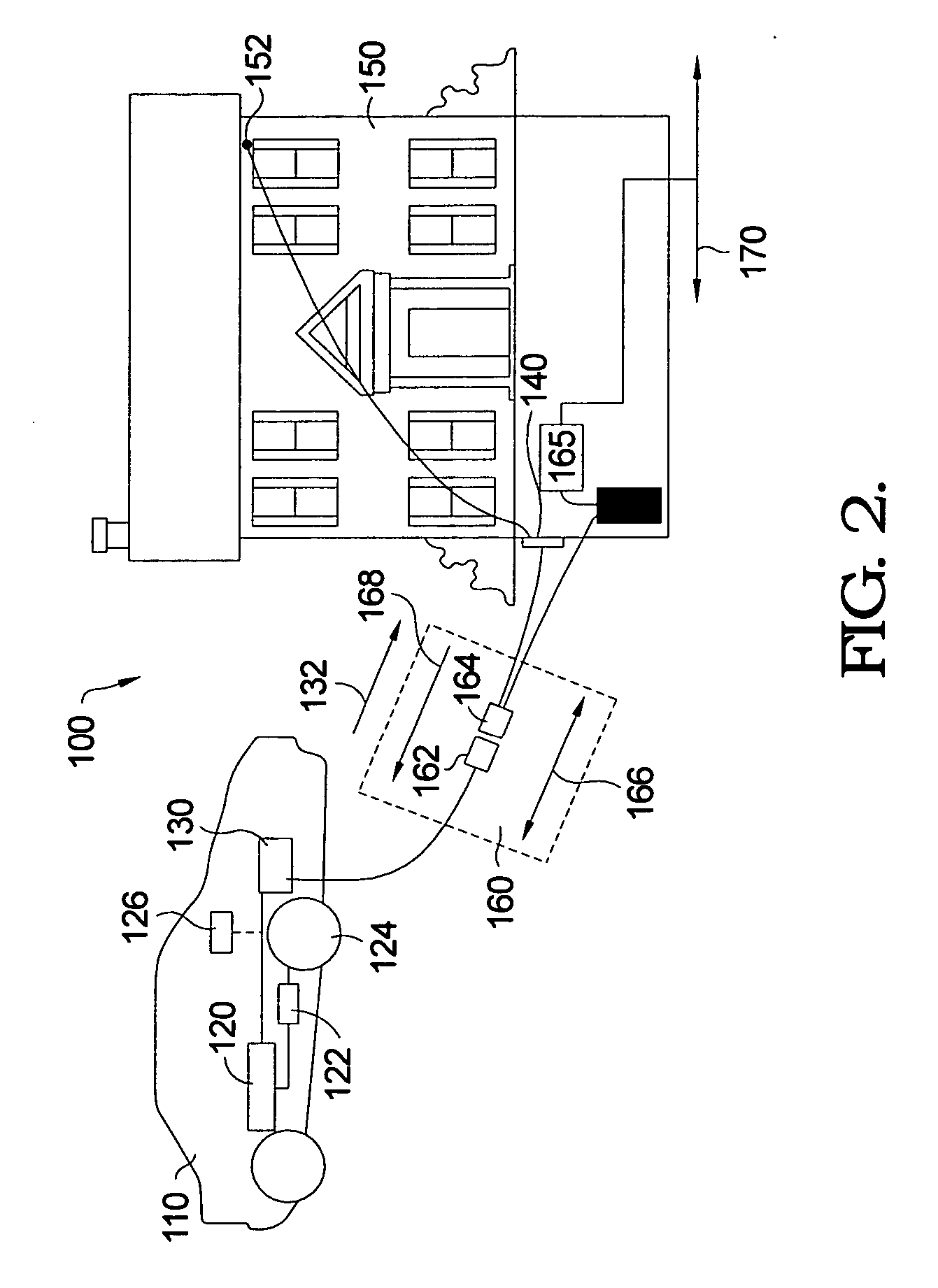Fuel cell system using external heat sources for maintaining internal temperature
a fuel cell and internal temperature technology, applied in battery/fuel cell control arrangement, electrochemical generators, electric propulsion mounting, etc., can solve the problems of wasting fuel, destroying parts of the system, and requiring the time to change over from a non-productive cold start mode to an operating mode productive,
- Summary
- Abstract
- Description
- Claims
- Application Information
AI Technical Summary
Benefits of technology
Problems solved by technology
Method used
Image
Examples
Embodiment Construction
[0015] The present invention is directed to methods and apparatus for electric resistance heating of space and elements within the “hot zone” enclosure of a solid oxide fuel cell system, preferably in combination with means for using “waste” heat from other sources, to assist in warm-up from a cold start and / or to maintain a stand-by temperature of reformer and fuel cell elements within the system and / or to maintain optimum operating temperatures within the system during periods of very low electrical and thermal demand on the system.
[0016] Referring to FIG. 1, a solid oxide fuel cell system 10 in accordance with the invention comprises an insulated enclosure 12 defining therewithin a heated space 14, known colloquially in the art as “the hot zone”. A catalytic hydrocarbon fuel reformer 16, SOFC stack 18, cathode air heat exchanger 20, and anode tailgas combustor 22 are disposed within enclosure 12 for operation at elevated temperatures as is well known in the SOFC prior art. Furth...
PUM
 Login to View More
Login to View More Abstract
Description
Claims
Application Information
 Login to View More
Login to View More - R&D
- Intellectual Property
- Life Sciences
- Materials
- Tech Scout
- Unparalleled Data Quality
- Higher Quality Content
- 60% Fewer Hallucinations
Browse by: Latest US Patents, China's latest patents, Technical Efficacy Thesaurus, Application Domain, Technology Topic, Popular Technical Reports.
© 2025 PatSnap. All rights reserved.Legal|Privacy policy|Modern Slavery Act Transparency Statement|Sitemap|About US| Contact US: help@patsnap.com



